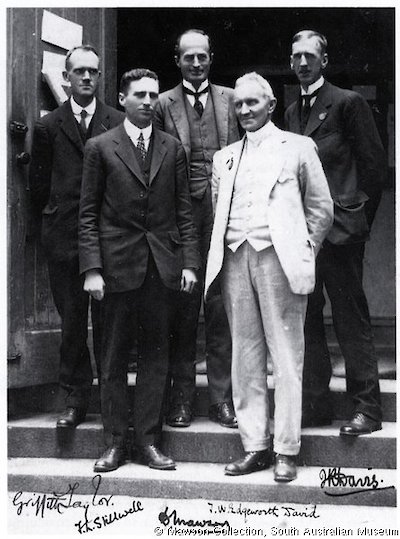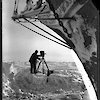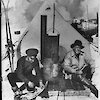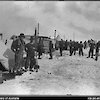Now, down to work
The final words of William Bruce’s ‘welcome-home’ letter to Mawson had anticipated his next great challenge — to publish the work of the AAE:
I sincerely hope that Australia will rise to the occasion and make sure that you are liberally supplied with funds so as to enable you to make the most worthy record possible of the Australasian Antarctic Expedition. It has so often been the case … [after] an expedition has done with work in the field that it is stranded for want of funds in order to give the result of that work to the world.
See William Bruce’s 'welcome-home' letter to Mawson [PDF].
Mawson the scientist knew that without publication his expedition would be seriously devalued. But he faced a second challenge: to pay his bills. The sale of Aurora (now laid up in Hobart) to Shackleton for his next great venture — a trans-Antarctic expedition — reduced the debt to around £5000. So the first publishing effort would be completion of Mawson’s story of the AAE, to be called The Home of the Blizzard.
Mawson recognised McLean’s superior literary abilities, and for his service as editor paid him £300 (the same amount, incidentally, that McLean and the rest of the 1913 party were paid to spend a year in the home of the blizzard). McLean’s involvement in the crucial project was to be one shining light in a year of misfortune — for the AAE as much as for countless others caught up in the great conflict that would become the First World War.
McLean was the right man in the right place. For two of the chapters Mawson supplied the barest skeleton to which McLean was to add flesh, making him effectively their author. He supplied substantial additions to two other chapters, and wrote one of the appendices.
On all other parts of the book McLean made his mark, rewriting and reducing Mawson’s voluminous drafts. Besides correcting Mawson’s grammar with a rigorously precise editorial eye, McLean gave a flowing, engaging style to Mawson’s plain scientific writing. As McLean was to say in a letter to Mawson some years later:
… it was mostly much more than editing … this ‘cutting down’ of the Book is very much my affair … It was 6 months of very hard work … You could hardly expect me to be human unless I regarded the work almost with a jealous affection.
See a flyer about [PDF].
For all that, McLean never claimed any more than an editor’s rights. Without question the book remained Mawson’s story; he drove the project and gave the book its basic structure.
The other vital contributor was Frank Hurley, but in 1914 he had more exciting fish to fry than helping Mawson assemble photographs for publication. He had made a quick visit to central Australia before going to London and deciding — against Mawson’s advice — to join Shackleton’s ambitious Trans-Antarctic Expedition. Mawson let his annoyance be known to Hurley in a letter, but Hurley went south anyway, aboard Endurance, on an adventure that would cement his pre-eminent reputation as a photographic chronicler of the Antarctic.




